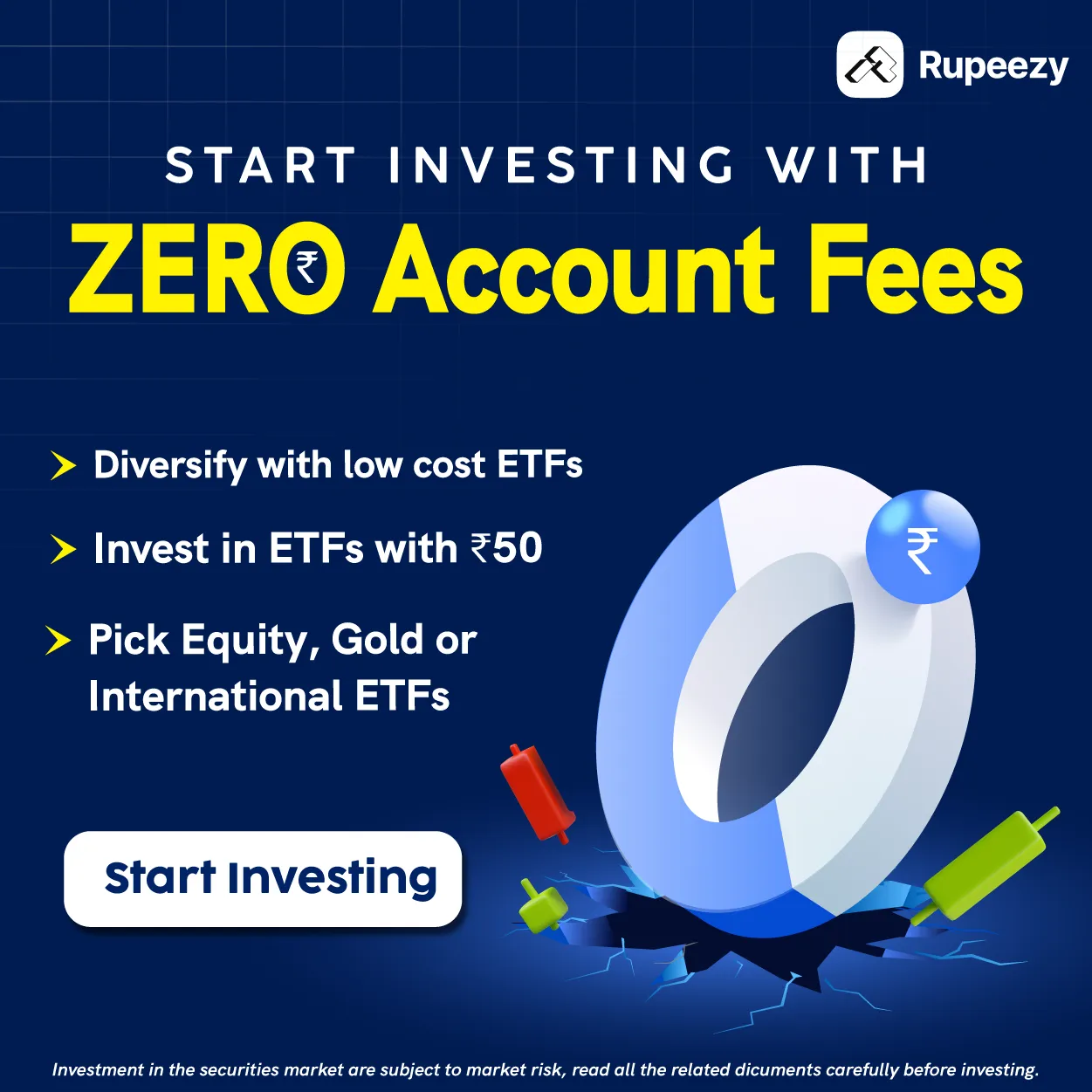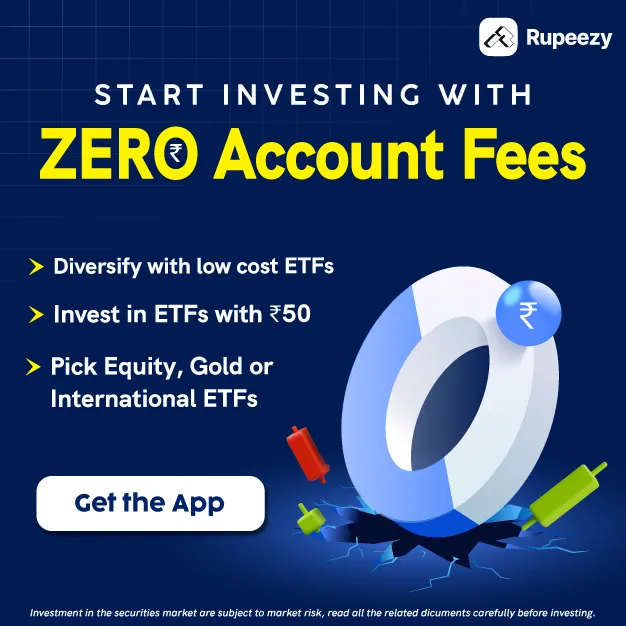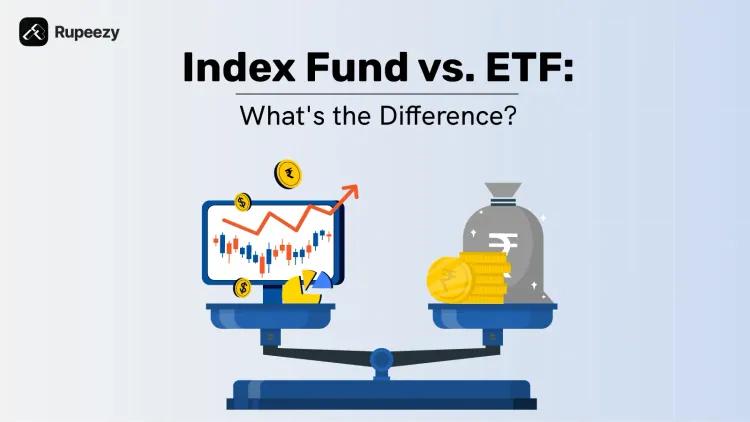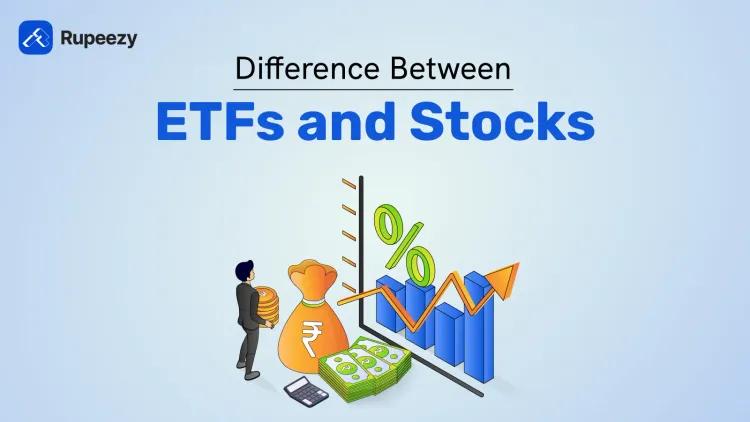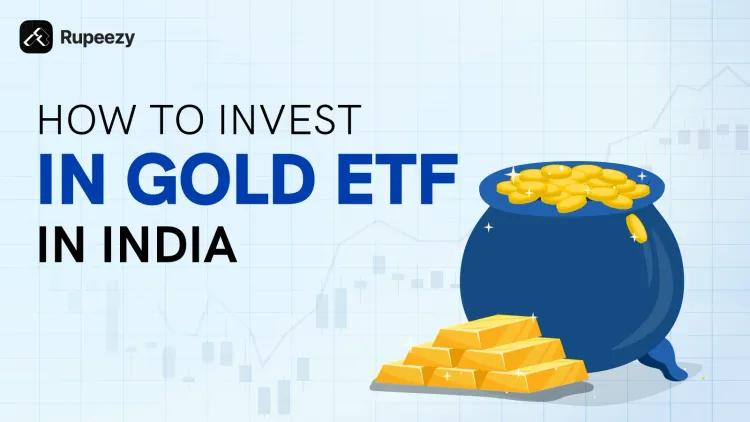How to Invest in ETFs in India - A Beginner’s Guide


00:00 / 00:00
The financial world has seen a major shift in investing styles over the past few years. Apart from traditional investment options such as stocks and mutual funds, a new option is now becoming increasingly popular ETFs (Exchange Traded Funds).
An ETF is an investment instrument that tracks an index, sector, commodity, or asset class and trades like stocks in the stock market. For example, if an investor wants to invest in the Nifty 50 Index, he can invest in the entire index at once by buying the Nifty ETF and that too with lower costs and more transparency.
Advantages such as low expenses, better liquidity, and diversification make ETFs a smart and practical option for today's investors, especially for those who want to start in the stock market or are looking for stable returns over the long term. For those who are looking for how to buy ETFs, this guide will help you to understand each and every sections of ETF.
What is an ETF?
An ETF or Exchange Traded Fund is an investment instrument that tracks the performance of an index, sector, commodity or asset class and can be bought or sold in the stock market just like a stock.
Investing in an ETF means investing not in a single stock, but collectively in a group of stocks. For example, when investing in a Nifty 50 ETF, the investor's capital contribution is distributed proportionately across all the companies included in the Nifty 50 index. This process is simple, transparent and efficient.
Types of ETFs:
Index ETFs: These track an index like Nifty 50, Sensex, or Bank Nifty.
Sectoral ETFs: These follow a particular sector like banking, IT, pharma.
International ETFs: These provide an opportunity to invest in foreign markets like NASDAQ, S&P 500 etc.
Gold ETFs: These track the price of physical gold and provide the option of investing in digital form.
ETFs offer benefits such as lower costs, better diversification and real-time trading, making them an effective option for modern investors.
ETFs vs Stocks vs Mutual Funds
ETFs offer benefits such as lower costs, better diversification and real-time trading, making them an effective option for modern investors.
Feature | Stocks | Mutual Funds | ETFs (Exchange Traded Funds) |
Ownership | Investment in a single company | Indirect investment in multiple companies | Direct investment in a basket of companies |
Risk | High | Moderate | Moderate to low (due to diversification) |
Liquidity | Very high (real-time trading) | Limited (based on NAV, processed once a day) | High (traded like stocks in real-time) |
Cost/Fees | Brokerage charges | Management fee + Expense ratio | Very low expense ratio |
Management | Self-directed | Actively managed by fund managers | Mostly passive (index-based tracking) |
Which option is suitable for whom?
For beginners or long-term investors, ETFs can be a better option as they come with lower expenses and diversification.
Traders get more flexibility in stocks and the opportunity for faster profit booking.
For investors who want professional management, mutual funds can be a suitable option.
ETFs are a balanced option of these three liquidity like stocks and diversification like mutual funds, that too at a lower cost. Understanding the differences will help you make the correct decision on how to trade ETFs.
Why Invest in ETFs?
Stability, transparency and control are very important when investing in the financial markets. ETFs have the ability to meet all these needs simultaneously. It works in a different and modern way compared to traditional investment options, which makes it special.
Smart wealth building tool: Investing in ETFs is considered a smart way for long-term wealth creation. They are linked to the market movement, giving the investor the possibility of benefiting from the growth of the economy.
Less complexity, more clarity: Unlike traditional investment products, ETFs clearly state which index or asset it is tracking. This makes it easier for the investor to make decisions.
Easy entry for market exposure: Through ETFs, new investors can get exposure to the stock market without much risk. It is an easy way that connects even small investors to major indexes.
Portfolio balancing option: ETFs can be used to balance the portfolio, especially when an investor is inclined towards only a few stocks or sectors. This can reduce the risk to a great extent.
Easy way to get international exposure: ETFs are also suitable for investors who want to invest in the US, Europe or other global markets without opening a demat or account abroad.
In short, ETFs offer the modern investor a powerful combination of transparency, low costs, risk management and international opportunities. This is why millions of investors around the world are making ETFs a part of their investment strategy.
How to Choose the Right ETF
Choosing the right ETF is extremely important to make the investment strategy effective. While making this decision, it is important to analyze some key factors so that the portfolio can provide stability and long-term benefits.
Which index does the ETF track?
First of all, it is important to know which specific index the ETF follows, like Nifty 50, Sensex, Bank Nifty, or international indexes like Nasdaq 100 or S&P 500.
If the focus is on the Indian market, then Nifty or Sensex based ETFs are considered suitable. At the same time, International ETFs provide better options for diversification and global exposure.
Expense Ratio: While investing in an ETF, its expense ratio i.e. the fees charged on management deserves special attention. An ETF with low expenses positively affects returns in the long term.
Asset Size and Liquidity: The larger the AUM (Assets Under Management) of the ETF and the higher its trading volume in the market, the more stable and reliable it is considered. Entry and exit are easy in liquid ETFs.
Tracking Error: The difference between the performance of an ETF and its base index is called tracking error. A better ETF is the one with the lowest tracking error, which gives an experience close to the actual return of the index.
Historical performance of ETF and credibility of the fund house: The past performance of the ETF and the credibility of the AMC (Asset Management Company) operating it are also important criteria. Stable track record and strong fund management increase credibility.
While selecting an ETF, it is necessary to consider its fundamental aspects and not just popularity. Selection made with a balanced approach leads to stability, diversification and cost control in investment.
Steps to Buy and Trade ETFs in India
Investing in ETFs has now become easier than ever. They are bought and sold on the exchange just like stocks. With the help of the simple steps given below, any investor can make a smart entry into ETFs. This section explains how to buy ETF in India.
Open a demat and trading account: To buy ETF, one must first have a demat and trading account. This can be easily opened through a registered broking platform like Rupeezy.
Search and compare the right ETF: One can get information about various ETFs listed on NSE or BSE. It is important to search the name of the ETF (such as Nifty 50 ETF or Bank Nifty ETF) on the broking app and compare its chart, expense ratio, and performance.
Place an order: ETFs can be bought like stocks through market orders or limit orders. Trading is possible in real time while the market is open.
Invest through SIP or lump sum: Investors can invest small amounts every month through SIP or lump sum. SIP promotes disciplined investing over the long term.
The process of buying ETFs is simple; it just requires the right research, the right platform and the right approach.
How to Invest in ETFs with Rupeezy?
If you are looking for options to invest in or buy ETFs in India, Rupeezy offers a seamless, fast and reliable platform that simplifies the investment process.
Fast and Easy Account Opening: Demat and trading accounts on Rupeezy can be opened in a matter of minutes in a completely digital way without any paperwork.
User-friendly platform and support: Whether it is the mobile app or the web platform, the trading experience on Rupeezy is seamless and fast. Also, the customer support team guides you at every step whenever needed.
Zero brokerage on delivery investments: Whenever an investor buys an ETF for delivery on Rupeezy, there is no brokerage charge making the investment affordable and transparent.
Managing Your ETF Portfolio
Successful management of an ETF portfolio requires a strategic approach and periodic adjustments to keep it in line with long-term goals.
Regular monitoring: It is essential to review the performance of your ETF portfolio regularly to track changes in investment performance and market conditions.
Rebalancing: Rebalance the portfolio annually or whenever there are major market changes or changes in personal financial goals. This ensures that the ETF mix remains in line with your investment strategy.
Diversification: Diversification is important to manage risk. A combination of domestic and international ETFs provides exposure to different markets, sectors and asset classes, creating a balanced and robust portfolio.
By actively making adjustments from time to time, an ETF portfolio can be made a strong and sustainable investment vehicle.
Risks of Investing in ETFs
Although ETFs can be beneficial for investors, there are certain risks associated with them that need to be aware of.
Market Risk: The performance of an ETF depends on the index or asset class it tracks. If the market falls, the value of the ETF may also fall.
Tracking Error: Sometimes an ETF does not exactly match the performance of that index, and this may be due to fund management strategy, expenses or other factors.
Liquidity Issues: Some ETFs may have low trading volume in the market, which may cause problems in selling them. If liquidity is low, it may be difficult to make transactions.
Currency Risk: When investing in international ETFs, fluctuations in foreign currencies can lead to losses, especially when the Indian rupee is weak.
It is very important to do thorough research before investing in ETFs. Choosing the right ETF should be done based on your investment goals and risk tolerance.
Taxes on ETFs in India
When investing in ETFs (Exchange Traded Funds), investors have to face various types of taxes. These taxes are mainly of two types: Capital Gains Tax and Dividend Income Tax.
Capital Gains Tax
The income from investing in ETFs is divided into two categories:
Short-Term Capital Gains (STCG): If the ETF is held for less than 12 months, the income is taxed at 20%.
Long-Term Capital Gains (LTCG): If the ETF is held for more than 12 months, the income is taxed at 12.5%.
Dividend Income Tax
Dividends received from ETFs are considered under "Income from Other Sources" and are added to the total income of the investor. The tax rate applicable on this is as per the investor's income tax slab. Prior to FY 2020-21, dividend distributions were subject to a Dividend Distribution Tax (DDT) of 15%, which has now been abolished.
Taxation on International ETFs
International ETFs, which invest in shares of foreign companies, are classified as "non-equity". There is no specific tax on the income from these, but the investor has to report the foreign income in his income tax return.
Note: Tax rules may change from time to time. Before investing, it is advisable to consult the relevant official sources or a tax expert for the latest information.
Conclusion
ETFs (Exchange Traded Funds) can be a great investment option, offering investors benefits such as diversification, low cost, and liquidity. The biggest feature of ETFs is that they can be bought and sold on the exchange like shares, giving the investor high flexibility. However, before investing in them, it is important to ensure that you have selected the right ETF and track its market trends properly. Starting with a small amount at the beginning of the investment and reviewing the portfolio from time to time can be a wise move. If you are thinking of investing in ETFs, opening an account with Rupeezy can take you the first step towards smart and effective investing. Remember, ETF investing is a long-term process that requires patience and discipline.
FAQs
Q. Is it good to invest in Gold ETF?
Gold ETFs can be a safe investment option, which offers gains in line with gold prices and eliminates the need to hold physical gold.
Q. Which ETF to buy?
Nifty 50, Sensex, and Gold ETFs can be good options. Choosing the right ETF depends on the investor's goals and risk tolerance.
Q. Is ETF a good investment?
Yes, ETFs are a good option as they have low expenses, liquidity, and diversification, which reduces risk.
Q. How much should a beginner invest in ETFs?
5-10% can be invested initially, thereby controlling risk and diversifying the portfolio.
Q. What is the 70/30 rule ETF?
In this, 70% of the money is invested in stock ETFs and 30% in safe investment options. This strategy maintains a balance between risk and safety.
Check Out These Related Articles |
The content on this blog is for educational purposes only and should not be considered investment advice. While we strive for accuracy, some information may contain errors or delays in updates.
Mentions of stocks or investment products are solely for informational purposes and do not constitute recommendations. Investors should conduct their own research before making any decisions.
Investing in financial markets are subject to market risks, and past performance does not guarantee future results. It is advisable to consult a qualified financial professional, review official documents, and verify information independently before making investment decisions.

All Category

